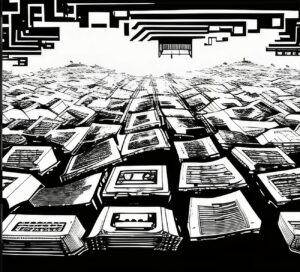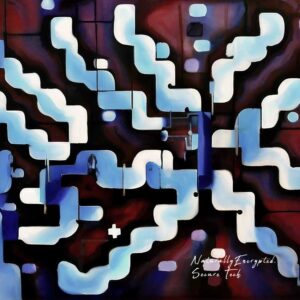The only web3 wallet you need? | Best web3 wallet in 2022
“If you own NFTs or crypto, you probably already use a wallet. But did you know that in the current Web3 infrastructure, your wallet is likely susceptible to hacks, malware, and scams? Whether you’re exploring the brave new world of crypto and NFTs, or already a seasoned Web3 investor, NEST®, the first blockchain digital identity solution of its kind, walks you through the ins and outs of a Web3 wallet and how to protect your digital assets.
What is a web3 wallet anyway?
Although several Web3 decentralized applications (dApps) like Tor and Bitorrent exists, Web3 infrastructure remains in its infancy. With challenges like ownership, authenticity, and interoperability, Web3 still has a way to go before it can live up to the hype of disrupting Big Tech.
So what’s a Web3 wallet? A Web3 wallet lets you create, store, manage, trade, and exchange digital assets like cryptocurrencies and NFTs (Non-Fungible Token) on blockchain. Like a physical wallet, Web3 wallets register your cyber assets secure in a decentralized way. You can use it through a mobile app or via a browser extension, like when used to access dApps and Decentralized Finance (DeFi) platforms, where cryptocurrencies are traded.
Web3 digital wallets are essentially a type of crypto wallet that you can connect to a specific blockchain network or have multi-chain capabilities, meaning you can mint, sell, and move NFTs and crypto assets across multiple chains and platforms like TOB®, AVA, ETH, BSC, SOL and more.
Types of Web3 wallets
Custodial wallets are offered by centralized platform providers, usually cryptocurrency exchanges like Binance, Free Wallet, and BitMex. They function in the same way that a traditional brokerage account or stock exchange would.
Any cryptocurrency you buy, e.g., Ethereum on Binance, will be stored on the exchange itself. The downside is that these centralized wallets and exchanges hold the private keys to the users’ wallets, putting the users at risk of gross mismanagement by the centralized third-party. Anyone who has your private key can access your account.
Custodial wallets are also less secure as you run the risk of losing all your digital assets if the exchange gets hacked, which happens fairly often. The pros, however, is that they are usually more convenient to reset your password if you forget and don’t require as much user responsibility.
On the other hand, a non-custodial Web3 wallet, or otherwise known as self-custody wallet, is an independent web or mobile application that let you store and manage your own cryptocurrency funds and digital assets using a private key or seed phrase or recovery phrase–a collection of words used to access your wallet. Popular examples are Coinbase Wallet and Trust Wallet.
In a non-custodial wallet, users own their private keys. It’s the safest option for most traders and investors as long as they take good care of their keys and seed phrases.
In addition, there are also…
- Hardware/cold wallets: USB sticks that you can store your private keys and digital assets on. Popular hardware wallets include Ledger, Trezor, and KeepKey.
- Paper wallets: Software to generate a pair of keys that comes with a digital file for printing. Examples include MyEtherWallet, Bitcoin Paper Wallet Generator.
- Software/cloud wallets: These desktop or mobile wallets are on the cloud and accessible from any Internet-connected device. They’re also known as hot wallets. Examples include Metamask Wallet, Coinbase Wallet, NEST®.
Although current best Web3 practices call for two-layer protection with both cold and hot wallets, this is a cumbersome and tedious solution. Even active users like Chelsea art gallery owner Todd Kramer, who recently lost 2 million dollars worth of Bored Ape NFTs, did not bother to store his valuable JPEGs in an offline wallet.
So, which Web3 wallet should I choose?
NEST® is the first Web3 wallet that lets you claim real world ownership and authentication of your NFTs. It is a non-custodial wallet, but it comes with a smarter and more secure method to store and retrieve your private key and password on your device.
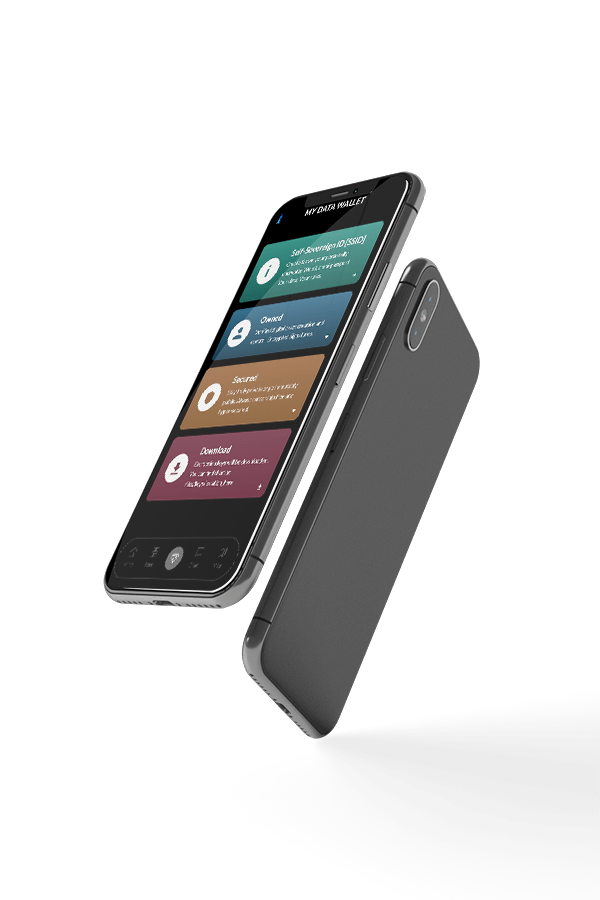
What do we mean by real world ownership? NEST® has built the world’s first blockchain identity authentication tech, managed in a decentralized way, so you can secure confidential multi-chain control of your assets. This is the next-gen digital identity: a Self-Sovereign Distributed Identity (SSDID).
For the first time, we are transferring copyright and ownership from the seller’s digital asset to the buyer so that both seller and buyers are real-world participants with real copyright and a smart contract that stands up in the real world. This means that even if you clicked a phishing link and lost your NFTs, we can help you trace your lost NFT provenance details to expose fraud.
NEST® is the world’s first decentralized Web3 wallet that lets you create, manage, earn, store, and exchange digital assets through individual encryption keys that are stored on the device. With our patented self-sovereign distributed identity (SSDID) technology on the NEST® app, you can:
✔️ Generate individually encrypted key file for maximum security during login [ZKP available].
✔️ Confidentially authenticate, sign and authorize transactions with your digital identity.
✔️ Attach your digital identity to your NFTs, bought or created, and prove ownership of your assets in real-world scenarios.
✔️ Store your individual encryption key in a secure location, as you choose and/or on your device or desktop.
✔️ Lock your NFTs and crypto funds in an encrypted, quantum-proof distribtued vault through your device – only you can access this with your individual key.
✔️ Choose who you want to share your personal data and assets with through ad-hoc third-party authentications. No one, not even us, has access to your data.
✔️ Recover your account if it’s hacked or stolen.
What other features does NEST® have?
1. Prove you own your NFTs and authenticate them
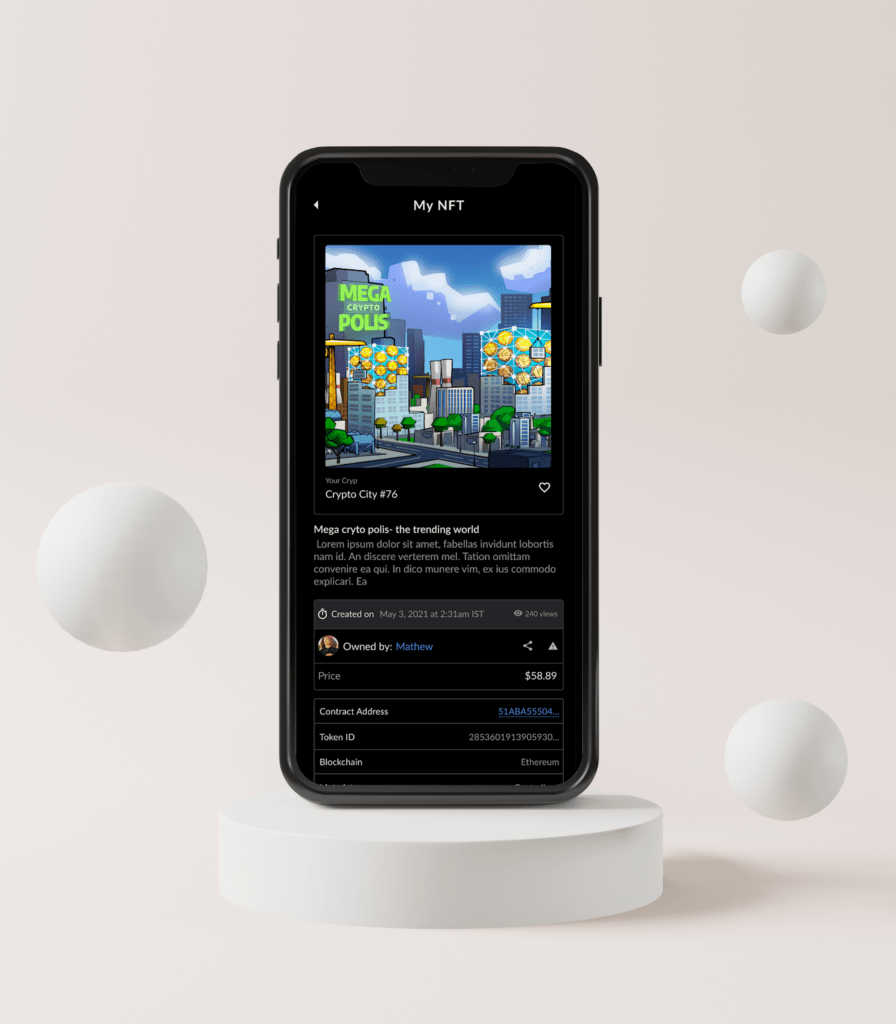
While hardware wallets provide an extra layer of security, they still can’t prove that you own your NFTs in the legal sense. Most people believe that once you buy an NFT, ownership is automatically transferred to you via smart contracts, of which the standard are usually ERC-721, 1155 or 20. Sadly, this is a misconception.
When you buy an NFT, you are purchasing the registration itself, not the digital asset that is linked to the token. The International Bar Association says, “The cryptographic link between the token and the asset does not automatically result in the transfer of any rights or obligations as to the asset – that occurs as a matter of contract between the buyer and seller.”
The original artist still retains the copyright to the asset, and may even retain a copy of the digital file. In addition, anyone on the internet can find a copy of the NFT, take a screenshot, and claim that they “own” the asset. Think of it like buying a book – even though you bought a copy of the original book, you don’t own the copyright to the novel inside of it.
In the real world, your physical identity documentation (passports, credit cards, etc.) verifies your ownership and protects what you own. But there’s no equivalent in the digital world.

With NEST®’s SSDID technology, however, every purchase, exchange, and transaction of NFTs is marked on the blockchain with your individual encryption key, which is used to enter legally-binding contracts with NFT buyers or sellers, approve transactions, import and export NFTs across different chains, and store your data and assets. These contracts stamped with your unique digital identity can prove that you are the owner of your digital currency in real-world courts.
In addition, each upload or creation of a digital currency generates an Instant Visual Blockchain Result Page (IVBRP®), carrying encrypted, provenance authentication. We can’t prevent hacking, but we can trace details back to the original owner if you ever lose your NFTs.
2. Genuine privacy and personal data control

In the Web2 world, centralized social media providers are notorious for storing your personal data and social media activities and selling them to data vendors and organizations. On top of this, they hold the ultimate power to decide who gets a voice on their platform and who doesn’t.
At NEST®, everyone truly and confidentially owns both their data and assets. Freely choose who you want to share with, or keep it locked securely in your own encrypted digital vault. Prove authenticated real-word ownership of transactions, exchanges, and assets while always maintaining confidentiality. We care about genuine privacy, and we work to develop hyper encryption, decentralization, and immutable (inalterable) distribution of trust and privacy to the individual.
NEST® also offers truly decentralized and encrypted social media and communications. Your messages, voice calls, and video calls on NEST® will be encrypted end-to-end with private keys stored on your device but never stored on our network. NEST® has no ability to decrypt your communications–only you can with your private keys. If you wish to, you can permanently delete all messages, chat logs, and call logs.
NEST®’s censorship-free social media ecosystem creates custom web addresses for each of your social media posts. Simply share on different social media platforms instantly and keep a permanent, custom web address. Even if a third-party social media site shuts down your post, it will stay permanently-recorded on the web address with full engagement analytics available.
3. Ironclad security with decentralized storage
As of 2022, the global NFT market topped $40 billion. At the same time, scams and frauds in the space have continued to get worse, reaching $4 million in losses from theft or fraud in just one month. A single artist, Aja Trier, found 87,000 images based on her work for sale on OpenSea with no rights to claim any profits from the sales.
Most NFT and crypto buyers believe that blockchain provides unbreakable security. The truth is, not only does blockchain not protect you from popular attacks like the recent OpenSea phishing scam where swindlers stole millions of dollars worth of NFTs; in fact, if you trade often, you are extra vulnerable to these attacks.
As a NFT owner or creator, how can you protect yourself from scams?
The issue with current Web3 infrastructure is that since NFT master-files are usually stored on public IPFS, there’s nothing to stop someone from taking the file you’ve used for your NFT and creating their own NFT.
To solve this problem, the NEST® wallet locks the master-files of every NFT creation to a decentralized storage system, instead of public IPFS. Only the authorized owner of the NFT has access to this storage, eliminating cases of scammers “screenshotting” someone’s NFT and re-minting it as theirs. From there on, manage your NFTs with legitimate user-led controls across different chains and decide which NFTs are shared with who, if at all.
The NEST® protocol is built by zero-knowledge proof and our L1 network uses zero-trust architecture. We prevent the kind of security loopholes prevalent in current Web3 infrastructure by requiring a security structure with additional layers of authentication.
The private key is stored device-side so no one will have access to your key, while offering a way to recover your account if it is hacked or stolen. Even if hackers get control of the file for your wallet key, the file is encrypted, and the hacker would need both the device and the password to decrypt this, making it almost impossible to hack.
4. Truly secure multichain access
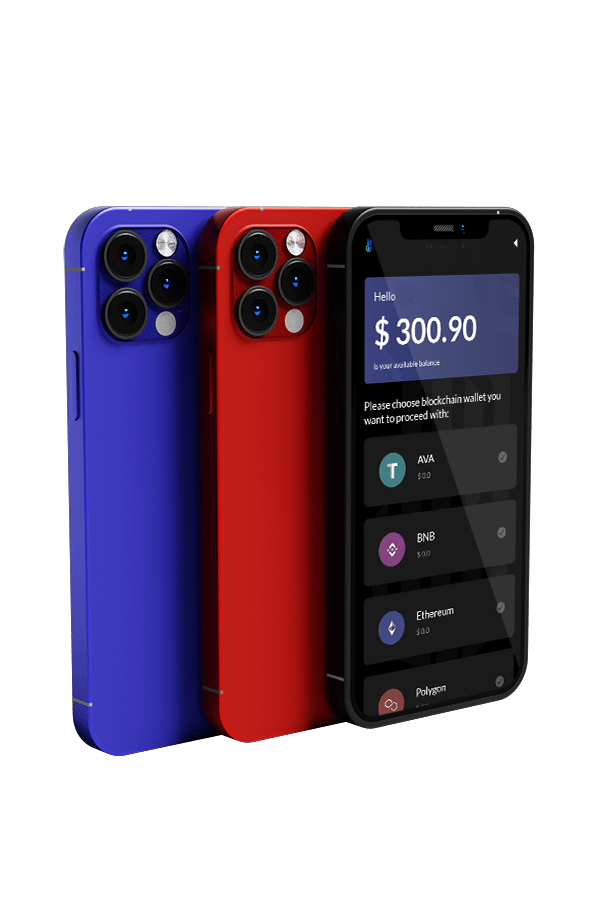
Current blockchain financial services are siloed and fragmented with each network offering its own advantages, creating a fragmented user experience. Moving or swapping your digital assets from one platform to another is cumbersome, expensive, and prone to security risks.
The future of Web3 depends on a multichain ecosystem: instead of competing with each other, cross-chain solutions allow anyone to build anywhere for true interoperability. Your web3 wallet should be block-chain agnostic and provide secure and seamless multi-chain access. Cross-chain interoperability, or the ability to transfer assets or value across multiple blockchain services increases liquidity in markets and provides a more dynamic blockchain experience.
With NEST®, you don’t have to choose a network. You don’t have to choose an institution. You don’t have to choose one method or another. Whether you want to put it on Solana, move it to Ethereum, or push it to another marketplace, everything is secured and transacted. The interoperability of multi-chain wallets is just one or two clicks from your mobile device. You can import, create, swap, or edit. Each NFT comes with a digital asset registration and smart-royalties which can be executed across various networks and settled in fiat or crypto whenever someone buys your NFT. This lets you keep your assets “liquid” with more returns and choice to sell on any platform you wish.
5. NFT management and creating dynamic NFTs
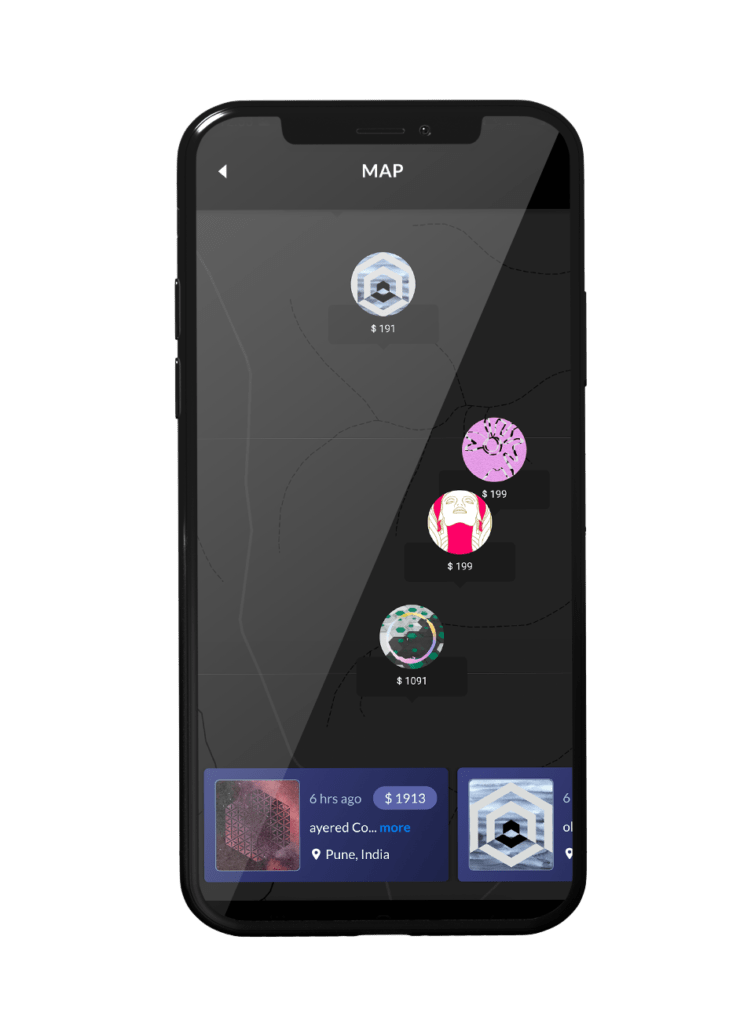
From minting to storage, NEST® is the one-stop solution for your NFT needs. On a single app, you can bulk-mint NFTs on any protocol of your choice, reducing gas fees and increasing your earning opportunities. Manage your NFTs with legitimate user-led controls and securely export, import, transfer, swap, or edit your NFTs across multiple marketplaces like TOB®, AVA, ETH, BSC, Klaytn, Solana and other Polygon blockchain networks.
NEST also comes with the world’s largest AI artwork database with over 5 million artworks which checks your NFT against plagiarism and attaches smart-royalties and provenance certifications to your NFT. This double-step protection proves authenticity and ownership, prevents re-minting, and ensures that you can reap the most possible revenues from the sale of your digital assets. You retain your original ownership and set your control limits for various projects.
What’s more, with NEST’s Dynamic NFT feature, you can add more value to the NFTs you own by embedding secure locations and photos. This geo-location feature is entirely unique to NEST–it allows for promotional activities related to the location of the NFT and shows the origin point of NFTs minted on the network. This feature later extends to AR/immersive experiences with NFTs based on location, bringing real world utility.
NEST® versus other Web3 wallets
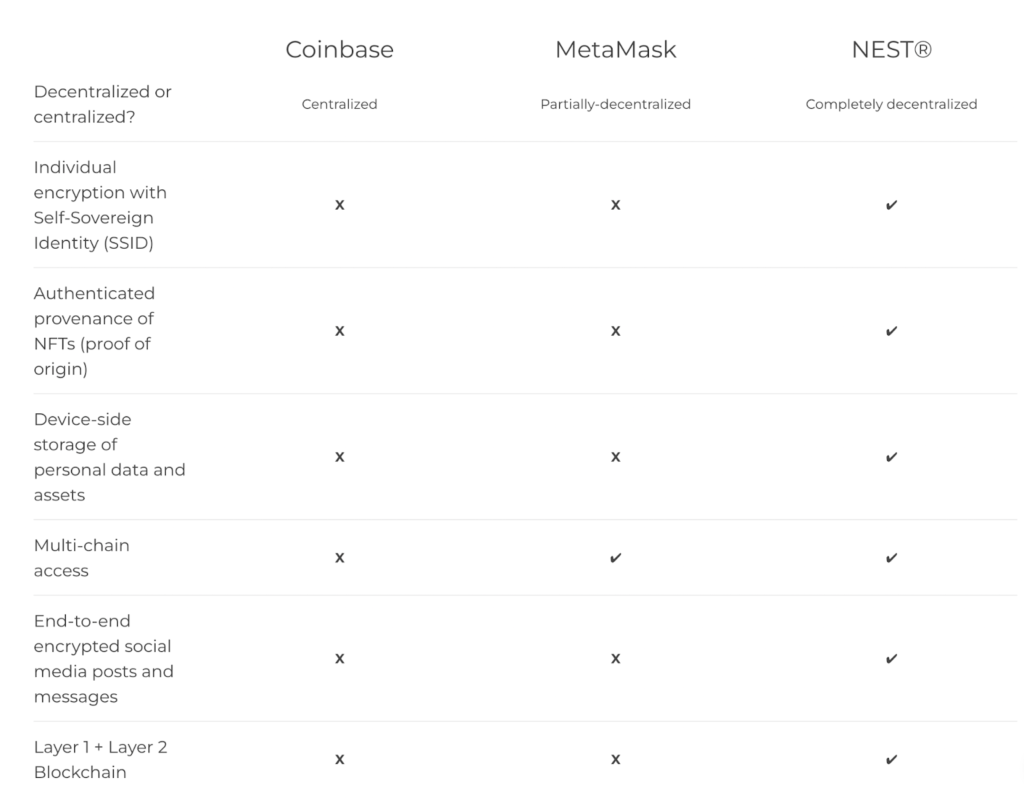
Rampant NFT fraud today calls for a radical Web3 wallet solution. At NEST®, we are passionate about genuine choice and solving the challenges that Web3 faces to create a practical and sustainable Web3 wallet. This is why we created the world’s first real-world identity authentication app for Web3 & the metaverse with:
- Proof of ownership
- NFT provenance and authentication
- Genuine privacy and personal data control
- Ironclad security with decentralized storage
- Complete NFT management
- Dynamic NFTs
- Truly secure multichain access
Ready to join the Web3 revolution with next-gen digital assets management? Sign up for our waitlist here, or follow NEST® on Twitter and Medium.”




